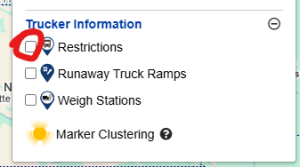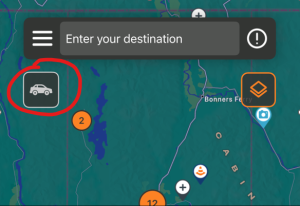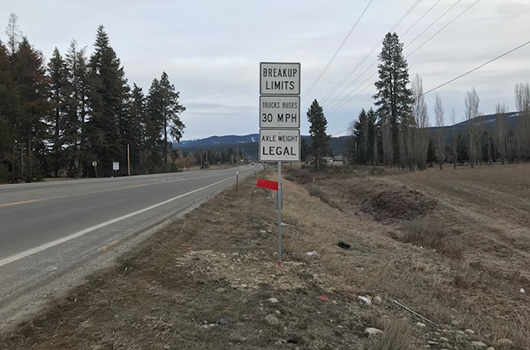Sections of some state highways in Boundary County will find themselves under weight and speed restrictions starting at 6 a.m. tomorrow as regional weather trends begin to warm ahead of spring.
Immediate impacts to commercial vehicles will be:
US-95 from the US-2 junction to Eastport (milepost 511 to 538.56)
Commercial vehicles 10,000 gross vehicle weight rating and greater will be restricted to 30 miles per hour with legal axle weight
US-2 from the US-95 junction to the Montana state line (milepost 64.35 to 80.18)
Commercial vehicles 10,000 GVWR and greater will be restricted to 30 miles per hour with legal axle weight
SH-1 from the US-95 junction to Porthill (milepost 0 to 11.19)
Commercial vehicles 10,000 GVWR and greater will be restricted to 30 miles per hour and 14,000 LB per axle, or legal axle weight whichever is less
State Highways 200 and 57 in Bonner County will likely also see similar restrictions in place starting next week.
As the season changes, additional sections of highways across the entire Idaho Panhandle may have load limits and speed restrictions in effect. These restrictions are communicated with red/green indicator flags on load limit signs. Red means restrictions are in effect and large vehicles must follow the reduced limits. When green flags are out it means all traffic can flow without restrictions as the road conditions are more stable.
ITD crews closely monitor both weather and road conditions and make determinations about restrictions being in effect, which is why drivers may see them intermittently on and off as conditions change.
“These restrictions are put in place when the highways start showing signs of stress from the winter freeze/thaw cycle,” Boundary Foreman George Shutes said.
As the frost and ice thaw, they turn into water underneath the road, making the ground soft and highly vulnerable to damage. Large vehicles, because of their weight, push that water as they drive, almost like a wave moving through the layers beneath the road. This causes serious damage to the highway’s base and pavement, leading to cracks, erosion, and ultimately, the road breaking down much faster.
Slowing those vehicles down, and in some cases, limiting the weight, significantly reduces the stress on the roadway and prevents unnecessary damage like severe potholes. This not only protects the road from costly repairs, but also extends its lifespan, ultimately saving taxpayer dollars and ensuring safer driving conditions for everyone.
While restrictions are in effect, state law does not require large vehicles to pull over or allow cars to pass. This means that there is the potential for delays with reduced speeds along highway corridors.
“The best thing people can do this time of year is give themselves a little extra time to get from point A to point B,” Idaho State Police Sergeant Ron Sutton said. “Too often we see people get impatient and take unnecessary risks, like attempting to pass when it’s not safe, and those decisions can lead to disaster.”
Load limit restriction information is largely targeted towards commercial drivers on the 511 system, however that information is available to everyone by adjusting program settings. Drivers can find up to the minute road restriction information both online and through the app by following the steps below.
Online users can select the ‘Restrictions’ option under ‘Trucker Information’ on the menu on the right side of the page. See the first example below.
Mobile users can select the driver view setting to toggle into ‘Trucker view’ mode to view restriction information. See the second example below.

Example 1

Example 2

